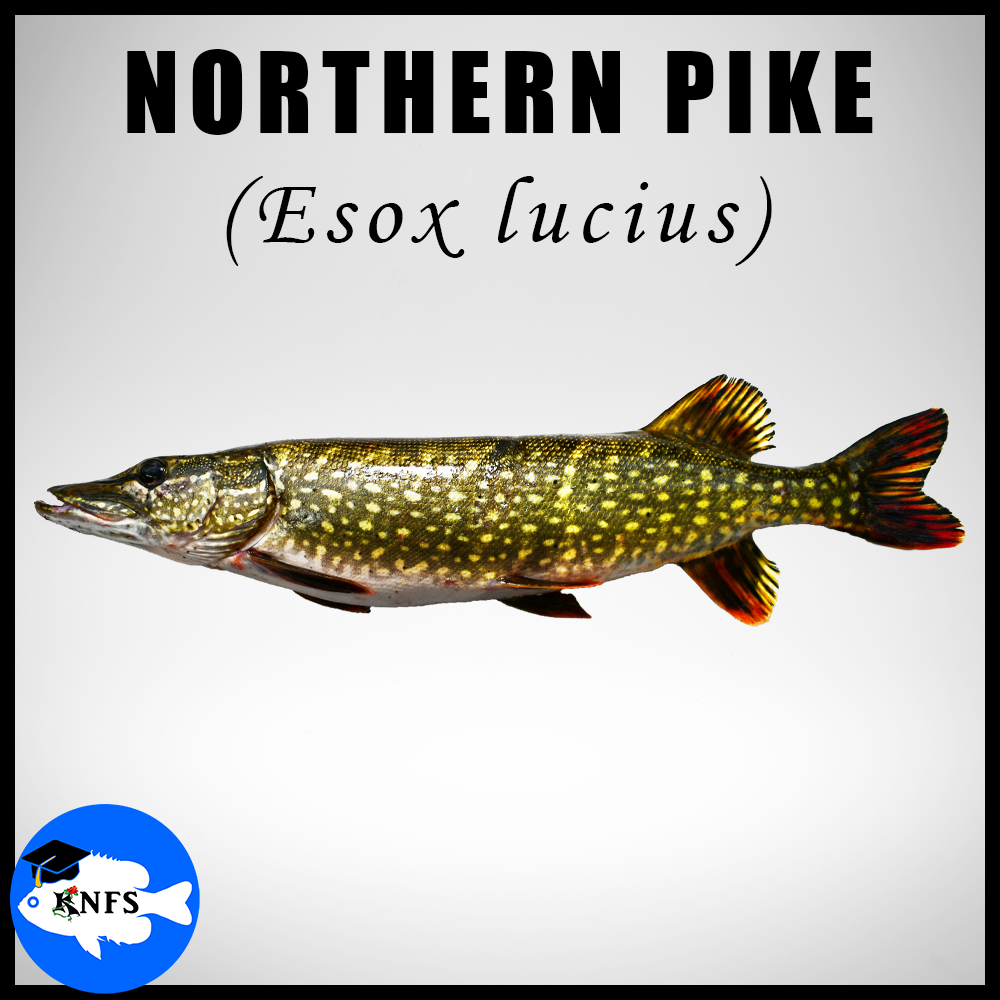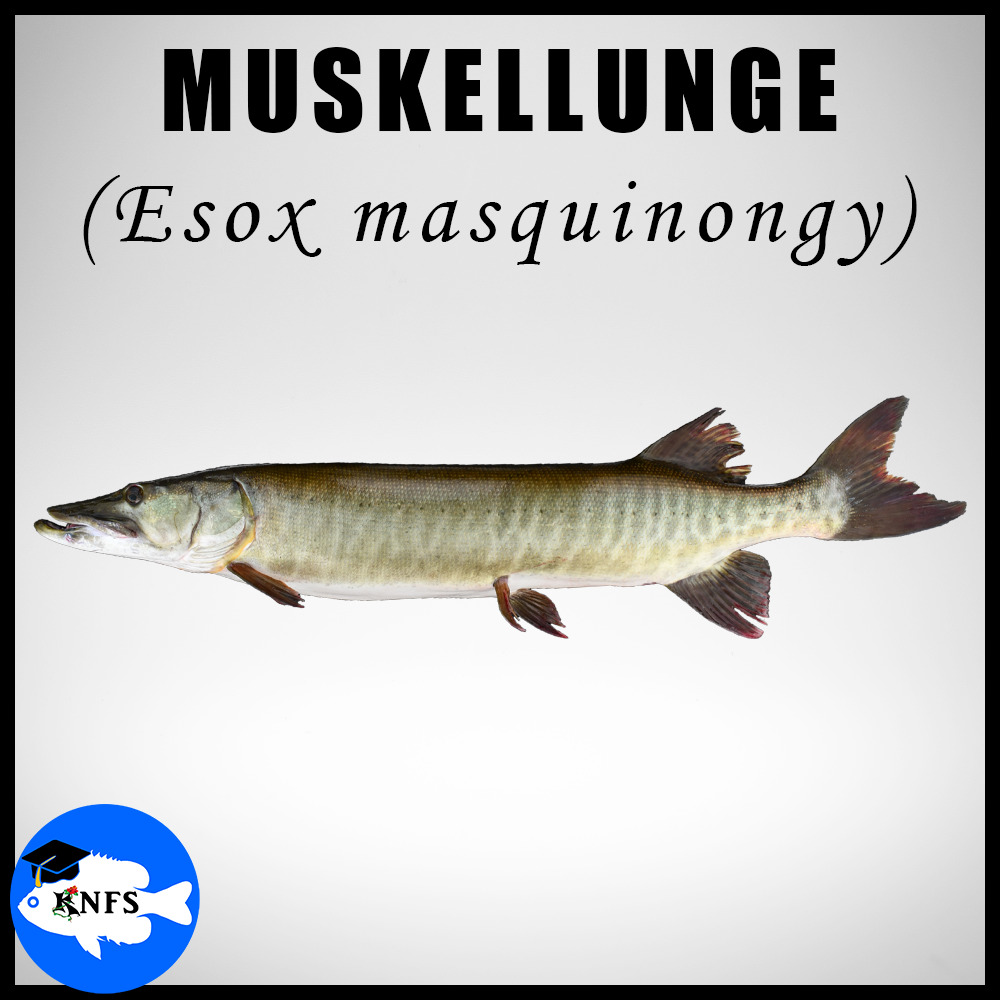By Koaw - 2023 - A KNFS COMMUNITY RESOURCE
Fig. 1 - Click to enlarge. These are the measurements that need to be entered into the calculator. Each measurement is discussed below.
For those tricky-to-identify tiger muskellunge, enter morphometric values into the calculator below to see if your fish’s score fits in the expected range of tiger muskellunge (E. masquinongy x E. lucius), muskellunge (Esox masquinongy), and/or northern pike (Esox lucius). (Read more on this calculator below.)

| Results will appear below! | |
|---|---|
| All Information | |
|---|---|
| |
|
| |
|
| |
|
| |
|
Northern pike centroid = 2.77; muskellunge centroid = -2.50
Morphometrics are just measurable features on a fish. The convenience of the calculator on this page is that it doesn’t require specific units of measure, only ratios. As long as all measurements are taken by the same units (pixels, inches, centimeters) and within the same realm (a single photo, hands-on measurements) then the ratios will work fine. The calculator takes and/or computes ratios of measurements from either a muskellunge, tiger muskellunge, or northern pike and provides a score. This score is then compared against the expected scores of muskellunge, tiger muskellunge, and northern pike.
No matter the score that falls within the range of the tiger muskellunge, that same score will also fall within the end-ranges of either the muskellunge or the northern pike. Since the tiger muskellunge never appears like a northern pike, any fish that resembles a muskellunge and provides a score that is in the tiger muskellunge/northern pike range will, with very high certainty, be a tiger muskellunge.
A score that lands in the muskellunge/tiger muskellunge range could be either type. However, there’s a good chance it could be a tiger muskellunge. Even if the score is in the muskellunge/tiger muskellunge range, it’s still useful to examine this score if needing to provide extra evidence along with other meristic data/appearance observations towards what is possibly considered a tiger muskellunge. E.g. - A specimen that has possible patterning like a tiger muskellunge yet has overlapping meristic values with muskellunge (submandibular pores, lateral line scales, etc.) would be useful to analyze with this calculator. A score falling within the tiger muskellunge range would provide much higher certainty that the specimen is a tiger muskellunge.
This calculator may seem a little intimidating, but I assure you it’s very simple to use. It only takes a handful of minutes to get the measurements needed. The discriminant analysis equation and comparable score ranges are all derived directly from Casselman et al. (1986).[1] See more details below the calculator as well as measuring explanations.
The calculator will either calculate ratios for you OR you can enter your own known ratios. Find known ratios by dividing the measured feature by the standard length (STL). Example: The ratio for PtOL is calculated as = PtOL/STL.
MEASURING NOTES: As the discriminant analysis equation that calculates the score is derived directly from Casselman et al. (1986) and all of their collected data, our objective for measuring should be to adhere as closely as possible to how they measured during their data collection. Unfortunately, they did not provide detailed information as to how they measured or where they obtained their measuring methods. Within their study, only a single statement described how they took the standard length. However, they did provide a graphic showing their measuring techniques. That graphic is replicated closely on this page (see Fig. 1).
JUVENILES/ADULTS: The study did not mention whether their data collection specimens included adults and juveniles. It can only be assumed that adults were measured. Upon testing juvenile muskellunge (ranging from 4-8”), scores fell within the ranges of both the northern pike and muskellunge, ergo, analyzing very young specimens will not yield reliable results. Within this calculator, all specimens tested 12” or larger produced scores that fell within the expected ranges of their corresponding types.
*MEASURING TO POSTORBITAL LENGTH OF HEAD (PtOL) - As mentioned above, there was no direct mention of exactly how measurements were taken in the study that provided the root equation for this calculator. It must be assumed, based on their provided graphic, that the postorbital length of the head extends to the most posterior portion of the operculum that includes the fleshy membrane that extends off of these bones and usually meets almost in-line with the cleithrum.
**MEASURING CRANIAL DEPTH (CD) - Again, without a more detailed description from Casselman et al., it must be assumed from their graphic that the cranial depth is measured from the dorsal point above the midpoint of the orbit and straight down to the most ventral point of the head not including the possible protrusion of the branchiostegal membrane.
***INTERORBITAL WIDTH (IOW) - Unfortunately, there is little clarity on this measurement from their publication. If adhering to the image provided in their publication, the measurements should be taken from the lateral (outside) margins of the frontal bones and not including some of the fleshy area on the bony rim. Crossman and Casselman often used measurements described by Hubbs and Lagler who describe this measurement as “…in measuring the least bony width the points are pressed tightly against the bone so as to eliminate the thickness of the flesh overlaying the bony rims.” [2]
IOW is an important variable within the calculations. However, if analyzing specimens from only a single lateral photo, there’s no confident way to measure this. The value of 0.0515 is inserted as a ‘safe’ value between pike and musky median range values, of which, also happens to be the median range value between the tiger muskellunge from both parental-type-crossings. Using this default # instead of the true value will skew the results from the actual fish’s ‘true score’. Yet, of every specimen I’ve tested with the calculator without their true IOW, the final score still resulted in the expected placement for that fish’s type.
THE UNSTANDARDIZED DISCRIMINANT FUNCTION: This is the exact equation provided by Casselman et al. (1986) used in this calculator: Score = -35.37PrOL + 27.3OL + 34.69PtOL + 125.6CD - 110.99IOW - 49.06TTL + 33.83LUL + 25.43FBL + 10.39CPL - 36.56CPD - 2.27
REFERENCES:
[1] J. M. Casselman, E. J. Crossman, P. E. Ihssen, J. D. Reist and H. E. Booke, "Identification of Muskellunge, Northern Pike, and their Hybrids," Am. Fish. Soc. Spec. Publ., vol. 15, pp. 14-46, 1986.
[2] C. L. Hubbs, K. F. Lagler and G. R. Smith, Fishes of the Great Lakes Region: Revised Edition from 1958 Edition, University of Michigan Press, 2004.














